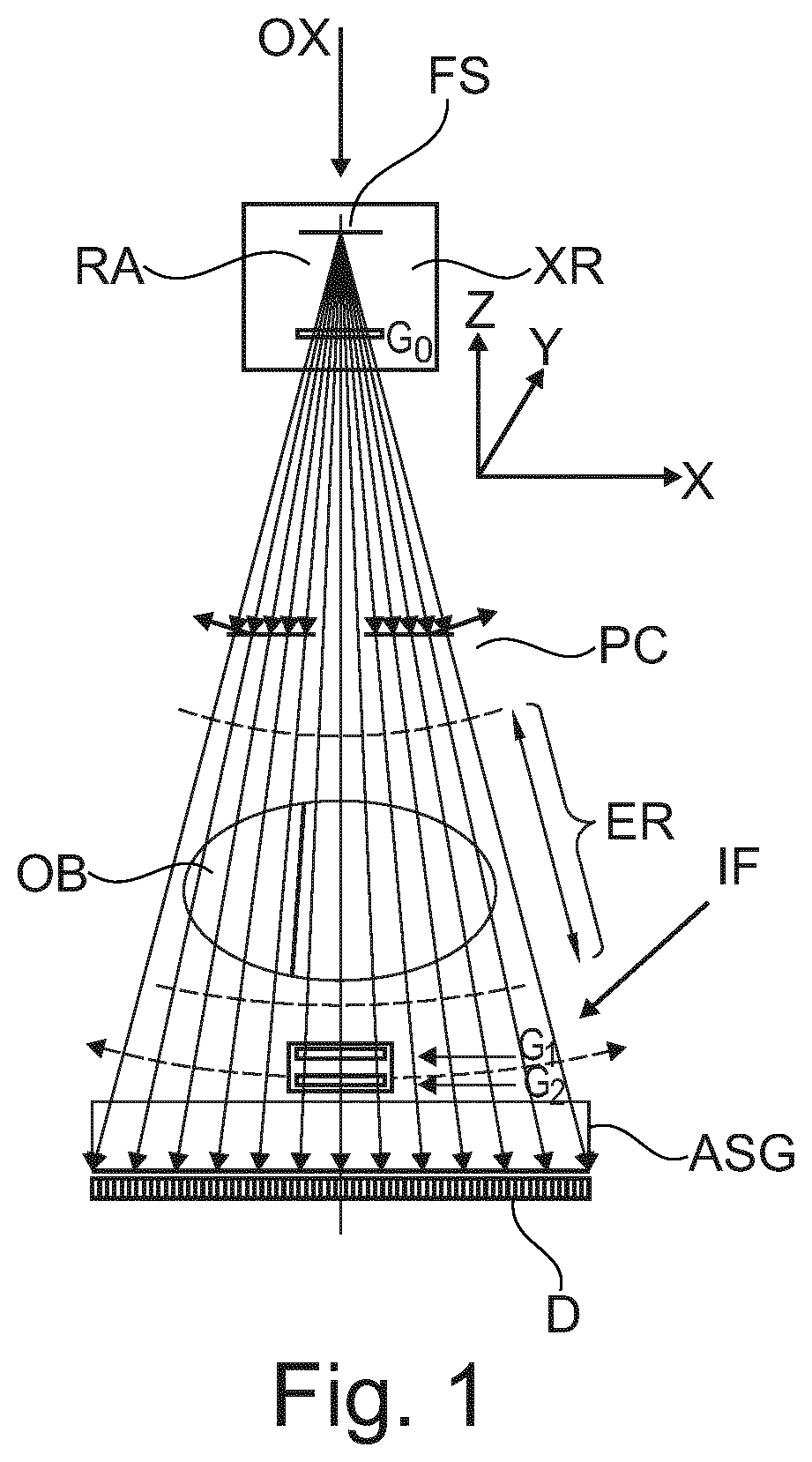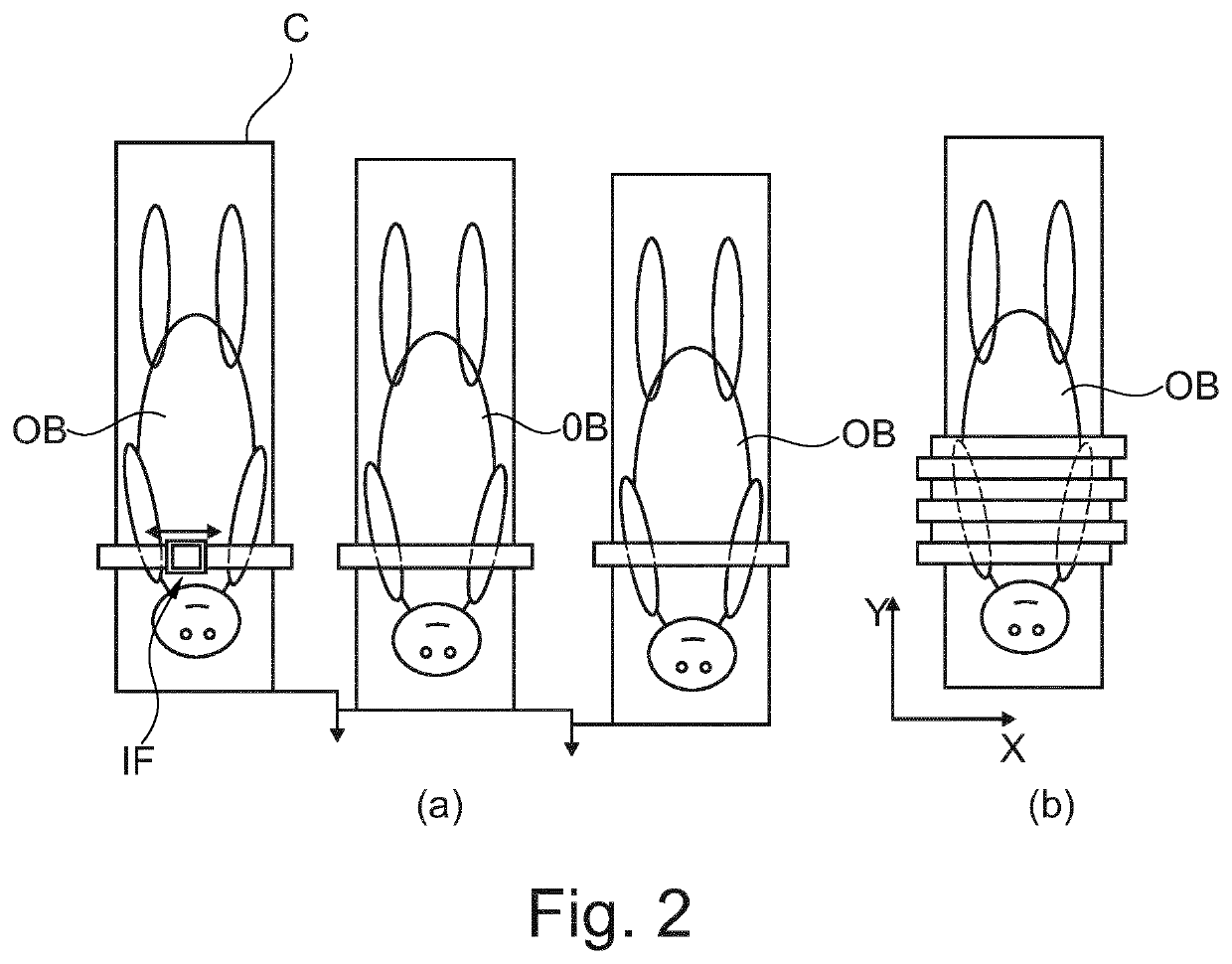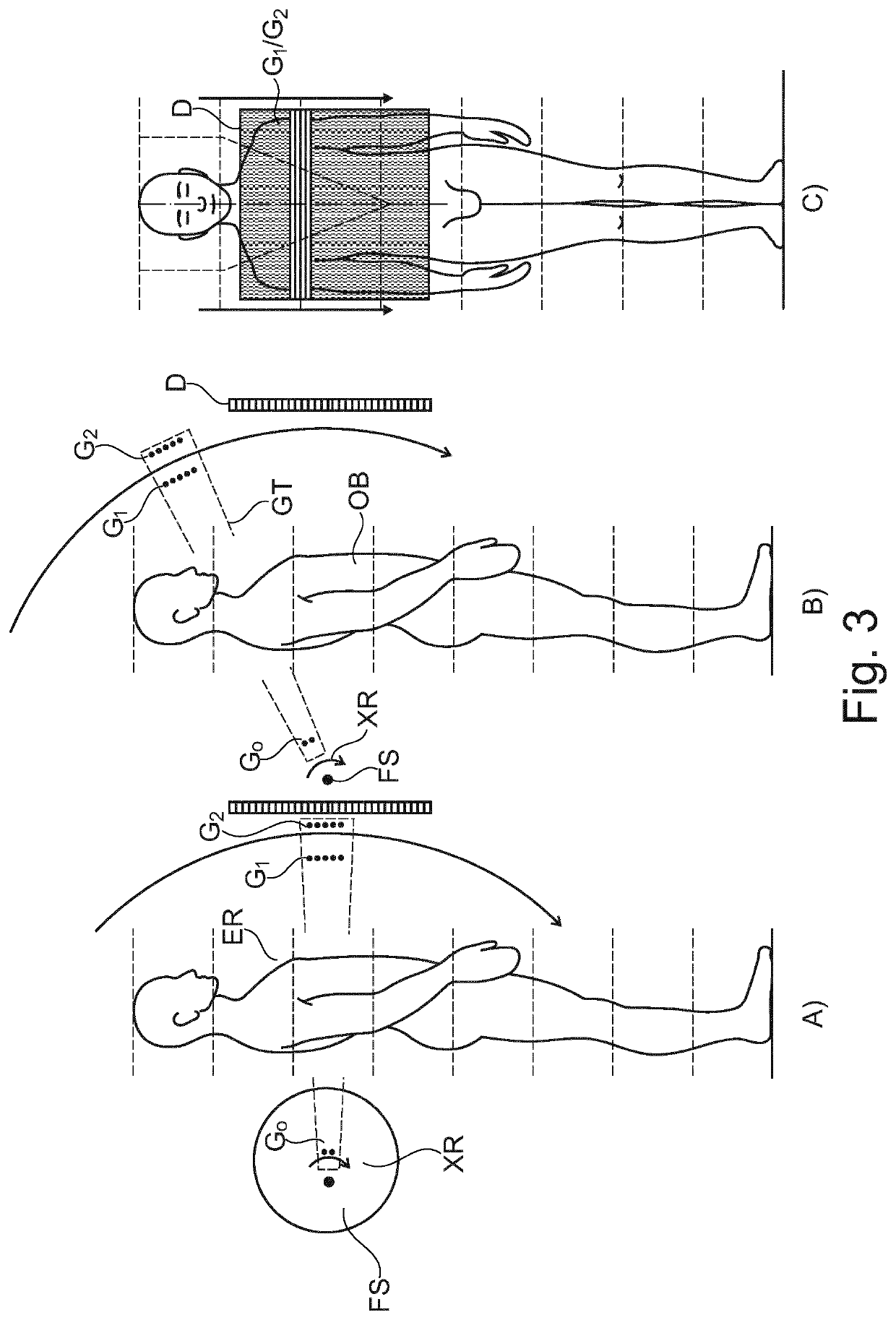Scanning X-ray apparatus with full-field detector
a detector and scanning x-ray technology, applied in the field of scanning x-ray equipment, can solve the problems of high cost, difficult alignment procedures, and relatively limited system size, and achieve the effect of softening the accuracy requirements for movemen
- Summary
- Abstract
- Description
- Claims
- Application Information
AI Technical Summary
Benefits of technology
Problems solved by technology
Method used
Image
Examples
Embodiment Construction
[0032]With reference to the following drawings we propose a new type of X-ray imaging apparatus. The X-ray apparatus is capable of multi-channel imaging, that is, it is not only capable of imaging for spatial distribution of absorption of or in an object OB but also for the spatial distribution of refraction (phase contrast imaging) and / or for the spatial distribution of small angle scattering (dark field imaging). This type of imaging capability is sometimes referred to a DPCI (differential phase contrast imaging), but, again, it is of course not only the phase contrast one can image for but also for images as per the other two channels. Very briefly, the newly proposed X-ray imaging apparatus has a grating based interferometer that is scannable across a stationary X-ray detector.
[0033]Reference is now made to FIG. 1 where an embodiment of the newly proposed imaging apparatus is schematically shown. We will also use FIG. 1 to introduce certain basic imaging components some of which...
PUM
 Login to View More
Login to View More Abstract
Description
Claims
Application Information
 Login to View More
Login to View More - R&D
- Intellectual Property
- Life Sciences
- Materials
- Tech Scout
- Unparalleled Data Quality
- Higher Quality Content
- 60% Fewer Hallucinations
Browse by: Latest US Patents, China's latest patents, Technical Efficacy Thesaurus, Application Domain, Technology Topic, Popular Technical Reports.
© 2025 PatSnap. All rights reserved.Legal|Privacy policy|Modern Slavery Act Transparency Statement|Sitemap|About US| Contact US: help@patsnap.com



